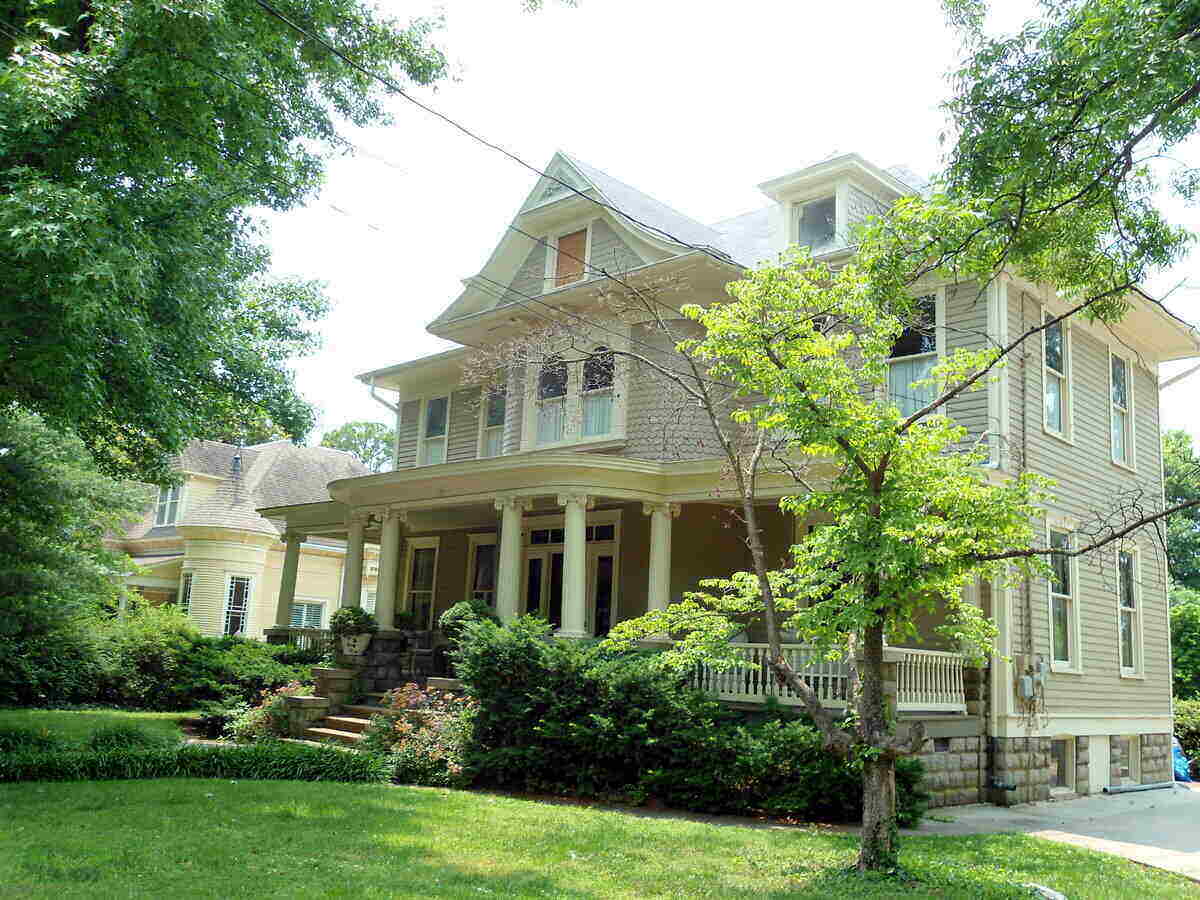
We all love the sight of lush, green grass that brings an inviting atmosphere to any outdoor space. But when is the best time to plant grass seed in Tennessee for a successful lawn?
Since Tennessee is in the transition zone, it’s a little tricky to answer that question. The best time to plant grass seed depends on the type of grass, and lots of grass types can thrive in the Transition Zone.
This guide goes into detail about when and how to plant the most common types of grass seed in Tennessee, followed by tips on the best way to plant them.
In this Tennessee grass planting guide:
- When to Plant Kentucky Bluegrass
- When to Plant Fescue
- When to Plant Ryegrass
- When to Plant Bermudagrass
- When to Plant Zoysiagrass
- Everything You Need To Know About Planting Grass Seed in Tennessee
- FAQ
When to Plant Kentucky Bluegrass in Tennessee

The best time to plant Kentucky bluegrass in Tennessee is late August through mid-October. Make sure your soil has been raked and prepared before planting since Kentucky bluegrass can take a while to germinate.
Once the seeds have been planted, water them from time to time, and don’t let weeds grow nearby that can compete with the newborn growth. Avoid planting Kentucky bluegrass in spring because its slow germination process will likely be interrupted by the heat of summer.
Kentucky bluegrass grows best when the soil temperature is between 60 to 75 degrees Fahrenheit. For those looking for a quicker solution, sod of this variety can be installed from January through June and September through December.
When to Plant Fescue in Tennessee

Whether it’s the Chewings (fine) or tall variety, fescue grass is best planted in late summer to early fall or late winter to early spring. The important thing is that the soil temperature should be around 60 to 75 degrees Fahrenheit.
Keep in mind that wet and rainy weather may make soil preparation difficult around these times, so be sure to factor this into your decision-making process.
You can install sod of this variety anytime between these months if needed; however, any newly installed turf – even sod – will need several weeks of acclimation before the grass can be walked on.
When to Plant Ryegrass in Tennessee

Annual and perennial ryegrass can be planted in Tennessee from late summer to early fall and late winter through early spring.
Since it grows during cool months, you’ll want to avoid planting ryegrass in hot weather, as heat-related stress will likely stunt its growth.
For best results, make sure your soil temperature is between 60 to 75 degrees Fahrenheit when you plant ryegrass. Keep in mind that you should apply starter fertilizer before the seeds are planted or the sod is laid out.
When to Plant Bermudagrass in Tennessee

Thanks to the glistening heat of Tennessee summers, Bermudagrass does really well in this climate. This hearty variety of grass can be planted through seeds, plugs, sprigs, or sod from late spring to early summer when the temperature is between 80 to 95 degrees Fahrenheit.
When it comes to fertilizing Bermudagrass, remember that too much isn’t a good thing since over-fertilization can stunt growth.
When to Plant Zoysiagrass in Tennessee

Here’s another grass type that loves the heat! Zoysia can be planted through seeds, plugs, sprigs, or sod from late spring to early summer when temperatures are between 80 to 95 degrees Fahrenheit.
Zoysiagrass is a great choice if you’re looking for a low-maintenance lawn for Tennessee. Its high tolerance to diseases and pests makes it ideal for those who don’t want to fuss over things like fertilizer or weed killer.
Everything You Need To Know About Planting Grass Seed in Tennessee
As all good things come with patience and proper knowledge, the same goes for grass seeding in Tennessee. Knowing the right combination of times to plant and planting methods can help you get the best out of your yard.
Here are some key points to keep in mind when it comes to planting grass seed in Tennessee:
Choosing the Right Grass Seed for Tennessee’s Climate
Tennessee has a temperate climate with warm summers and mild winters, so you can grow both warm- and cool-season grasses. Warm-season grasses grow best in late spring and summer, so that’s when they should be planted. Cool-season grasses grow best in early spring and fall, so that’s when they should be planted.
For a green lawn year-round, consider planting a mixture of cool- and warm-season grasses in your lawn. You can also overseed a warm-season lawn with fescue in fall for a green winter lawn.
Pro Tip: Be sure you have the right grass type for your specific region. For those in Nashville and the surrounding areas, see our picks for the best grass seed for Middle Tennessee.
Picking the Right Weather Conditions
Local weather conditions in your specific area of Tennessee, especially rain and wind conditions, should also be factored into the best time to plant grass seed. Too much rainfall can wash away seeds, while too little will cause drought-related issues.
Windy days can also pose a problem for seeding grass, as strong gusts can blow your seeds away before they have time to take hold in the soil. For the best results, seed on a clear day with mild wind.
Preparing Your Lawn for Planting
In order to make your grass-growing dreams come true, it’s important to prepare a solid foundation for the seeds. Here are some steps you’ll need to take in order to make sure your yard is ready before planting grass seed in Tennessee:
Lawn Leveling

Especially in the hilly and mountainous regions of Tennessee, sloped or uneven lawns can make grass seeding difficult. Before planting, use a soil blend that consists of sand, topsoil, and compost to level out the uneven areas in your yard.
Soil Preparation

Before you start tossing around seeds, make sure the soil is ripe with nutrients and moisture and has been tilled adequately.
With a soil test, you can easily see what kind of nutrients your soil is missing, which will help you decide what kind of fertilizers or soil amendments to add before planting new grass.
Aerate Your Soil

Core aeration loosens up compacted soil (common in the rocky regions of Tennessee), which gives new grass roots plenty of room to grow deep into the ground. If you’ve had trouble with soil compaction before, it’s a good idea to aerate your soil before trying to establish a new lawn.
Fertilizer Application

Fertilizer aids in the development of root systems during new grass growth. A starter fertilizer, specifically designed for new grass seeds, can provide the right nutrients while being gentle enough for seedlings.
FAQ About Planting Grass in Tennessee
The cost of planting grass will depend on the kind of grass you are planting, how large your yard is, and other materials needed for the job. If you do it yourself, it will cost around $0.01 – $0.04 per sq. ft. for seed + $15 – $700 for spreader. If you hire a professional, it will cost between $680 and $1,815 to seed a typical-sized lawn.
Kentucky bluegrass is a cool-season grass that’s best adapted for the fall and winter months in Tennessee. It retains its beautiful green color, even throughout cold weather, making it a great choice for year-round lushness.
It depends on what you planted and how you planted it. For seeded lawns, it may take up to 2 months before you can start mowing. Sod may take only 2 to 3 weeks, while sprigs, stolons, and plugs can require up to 6 weeks.
Wait until the root system is firmly established so you don’t risk pulling out any of your new turf when mowing.
Also, it’s recommended to let your lawn grow a bit longer than usual for the first couple of mows before you cut to the recommended height. This way, you give the new turf a chance to become established and reduce the risk of scalping damage. Learn more about mowing in our lawn care tips for Tennessee.
Grass plugs are individual turf plants grown in trays in controlled conditions. They can be planted to repair damaged areas of lawns or fill in bare soil patches and create a beautiful, lush ground cover look.
Grass plugs measure approximately 1.5 to 3 inches in size and should be planted 9 to 12 inches apart.
The main benefit to planting grass plugs is that they are ready to plant, so they require less of an investment in terms of time and money. They’re a compromise between the high cost of sod and the high effort of growing a lawn from seed.
Your New Tennessee Lawn
Whatever kind of grass you’re planting in Tennessee, you can start your lawn on the right foot by planting at the right time of year. But that’s only the beginning. Once your new lawn has established itself, you’ll need to take care of it year-round with proper mowing, watering, fertilizing, and more. If that sounds like too much work for you, reach out to a local LawnStarter pro to help you maintain the perfect lawn. It doesn’t matter if you live in Nashville, Knoxville, Memphis, Chattanooga, or anywhere else across the Volunteer State—a lush lawn is within your reach with help from LawnStarter.
Main Photo Credit: Dayton, Tennessee / Brian Stansberry / Wikimedia Commons / CC BY 3.0




